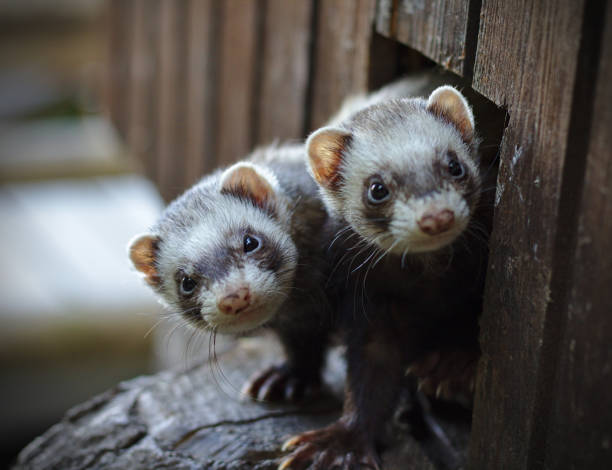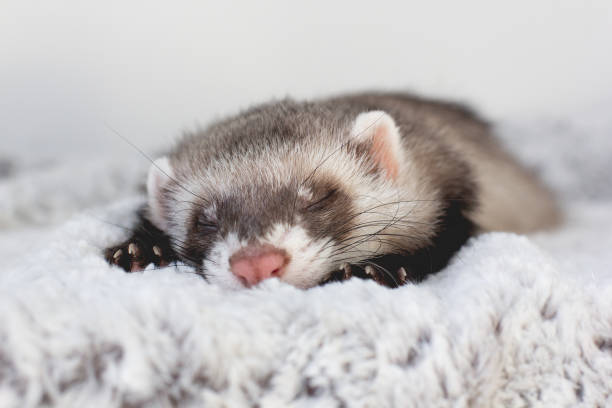Care instructions in ferret books usually assume two people working together. Yvonne Herold gradually found tricks with her animals on how to do it well on your own – and also for other everyday problems.
A normal day begins with the fact that first thing in the morning I go from room to room to clean the countless litter boxes in the apartment. Next, I collect all the food and water bowls and nipple drinkers to wash out with hot water. Tap water goes into the water bowl and mineral water into the nipple drinkers. I open a fresh can of cat food and refill it with dry cat food. Sometimes I also soak the dry food in lukewarm water. Loaded with several bowls and water bottles, I then make my way out of the kitchen and back into the living room, because I’m always besieged as if the five haven’t had anything to eat for days. But I have a trick: I tap one of the bowls with my fingernail and at least three ferrets run to the cage and wait impatiently for me to finally serve them.
They even hold still for a special candy

Every two days there is meat in the evening. They either buy it fresh on the way home or I get it out of the freezer in the morning. The preparation of chicken, turkey, hearts, or gizzards is quite simple – just chop up and you’re done. Quails are either whole or I roughly chop them. I either buy the coveted minced beef fresh or I assemble my little meat grinder and start turning it diligently. If I serve meat, I initially sit next to the animals and make sure that everyone gets their share, because there are usually fights. When the first hunger is satisfied, which you can tell very well by the fact that something is put aside for bad times, I put the bowl away so that it doesn’t get emptied and the meat is distributed to all corners of the apartment.
Weekly weigh-in
One thing my ferrets invariably love is the weekly weigh-in. I use a scale that you can hang up. It is designed for a maximum of five kilos and has a 20-gram subdivision so that you can determine the weight quite accurately. I always hang the scale on the doorknob. The disused hood of a baseball jacket comes on the hook. The ferrets are placed in the hood butt first, then vitamin paste is given to keep them still. I then read the weight while holding the tube in one hand and using the other hand to keep the other ferrets from jumping up the hood and falsifying the reading. The determined weight is entered in a table. In this way, I can quickly determine whether one of the animals is losing too much weight in an unusually short time, or whether the summer and winter-related weight loss and weight gain are normal.
Even cutting the claws is almost child’s play
I sit on the floor with my knees bent. I now lay the ferret on my back on my stomach. So that the little whirlwinds stop for a moment, they get a tube of paste between their front paws, and while they’re licking along I can easily cut their claws.
No, you’re not cleaning my ears!

My ferrets’ ears are only cleaned when they are dirty. I have cotton swabs and kitchen towels ready. Sometimes I also use a special ear cleaner. Then I sit on the couch or on the floor. I take the animal with my left hand in the sling and place it on my lap. With my right hand, I brush the fur on the ear aside and carefully clean the ear. Then the other ear follows in the same way. Some ferrets put up with this procedure with no problem, others don’t like it at all. For example, my Merlin has the biggest ears, but he actually folds them up; he puts his ears very close to his head and folds them.